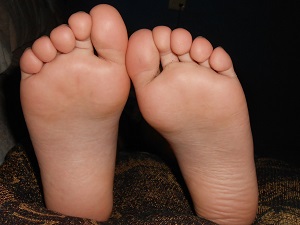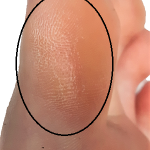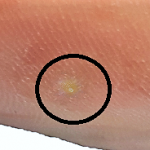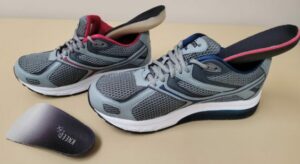
Diabetes: When to be concerned about your feet
As a diabetic, it’s important to take care of your feet. Complications that arise from diabetes can affect the feet which increases the risk of developing an ulcer.
An ulcer is an important condition to avoid as a diabetic. Because it’s a wound that doesn’t heal properly, it is at a higher risk of infection. These ulcers are something to be concerned about with diabetes because once an ulcer has developed, there is a higher risk of amputation in the feet or legs.
Diabetes: Complications affecting the feet
Two conditions that can arise from diabetes are peripheral neuropathy and peripheral arterial disease.
Peripheral Neuropathy
Peripheral neuropathy is when the nerves are affected in the feet, which can impair sensation. This can become a problem because injury can develop quickly and without notice. For example, if a pebble or another small object slips into the shoe, it can push against the skin. Without neuropathy, this object will create pain and the pressure will be removed immediately. With neuropathy, there may not be any pain and the object will not be removed. After stepping on this object multiple times, it can puncture the skin. If the feet are not regularly inspected, this cut may go unnoticed for days or weeks. Without the proper treatment, the cut could become infected.
Peripheral arterial disease
Peripheral arterial disease (PAD) is when blood flow is reduced to the extremities, such as the feet. This can become an issue because it can impair healing rate. If the skin has a cut and becomes infected, it may not heal as quickly. With impaired healing, a simple cut can develop into an ulcer, which is a wound that has impaired healing.
Ulcers are something to be concerned about for diabetes, and they are important to prevent as an infection in your system can become threatening to your feet or legs. Ulcers can eventually lead to an amputation of a toe, foot, or even a leg.

Signs to look out for
The first signs of an ulcer developing are signs of pressure. There are a few signs to look out for, which will tell you where pressure points are.
Redness on the feet is an early sign of pressure. Take a look at the top and bottom of the feet, and pay extra attention to the tops of the toes, ball of the foot and sides of the feet. When new redness develops, it could be various factors such as a new shoe, a new activity or the feet changing that are causing pressure.
Calluses and corns are an indication of a pressure area that has been there for months or years. A shoe could be causing these to develop, but most times it can be the way your feet are moving. For example, if your arch collapses at the ball of the foot, this extra pressure under the ball of the foot will be present in all shoes and while barefoot. These can form anywhere, but pay extra attention to the ball of the foot, heels and sides of the toes.

Bruising typically forms with higher impacts over a shorter period of time. This is common in a shoe that is too short, or in a shoe that is too big and the foot slides forward.
How to prevent an ulcer
To prevent an ulcer, it’s important to prevent pressure from outside sources as well as from the way you are walking.
A couple daily routines to get into the habit of are inspecting the feet and looking inside shoes. Looking at the feet everyday for signs of pressure will help catch signs of pressure early. Dealing with pressure early is more manageable than waiting until a sore has formed. The habit of looking inside shoes is important to prevent small objects from causing injury. Before putting on every shoe, look inside, feel around and take out the shoe insert to check for small objects.
 Wearing the appropriate shoes will help prevent pressure. Make sure the shoes fit properly, and they have the right amount of support. The shoes should be wide enough, long enough, have minimal seams inside and ideally have an adjustable closure like laces or Velcro.
Wearing the appropriate shoes will help prevent pressure. Make sure the shoes fit properly, and they have the right amount of support. The shoes should be wide enough, long enough, have minimal seams inside and ideally have an adjustable closure like laces or Velcro.
Custom foot orthotics is another great way to prevent pressure. Both flat feet and high arches can cause abnormal pressure on the feet. Orthotics can help to redistribute this pressure and cushion where necessary.
If you have any questions about your feet, feel free to contact us or book an appointment!

You must be logged in to post a comment.